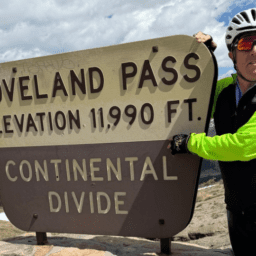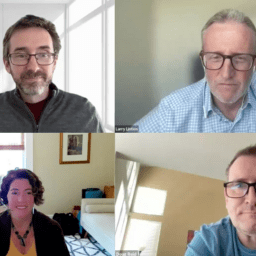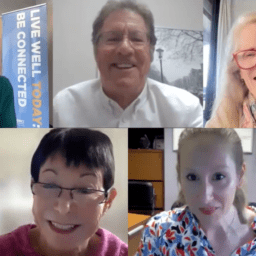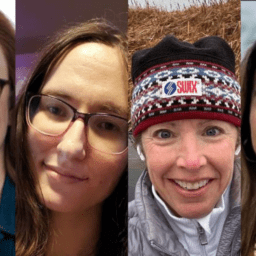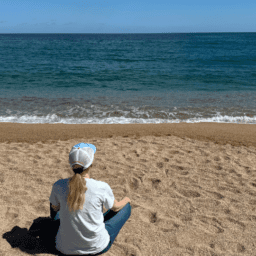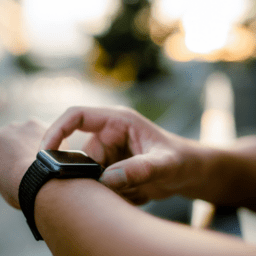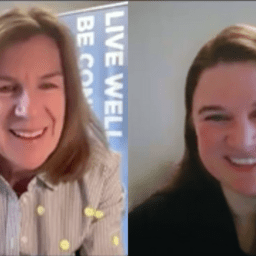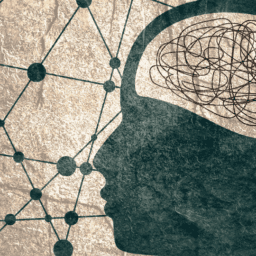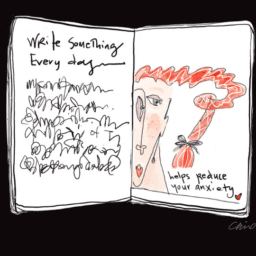Kelsey Phinney ready to ride with her dad, Davis, and her brother, Taylor.
The panel for the August 2023 Care Partner Meetup included Executive Director Polly Dawkins; Ambassadors and Parkinson’s Care Partners Pat Donahoo and Gail Gitin; Connie Carpenter Phinney, who wrote the follow-up below; and two special guests: Kelsey Phinney and Julie Andrew Hoobler.
NOTES FROM this month’s meetup
Written by Connie Carpenter Phinney
Our August Care Partner Meetup focused on the experience of children of people with Parkinson’s. We hope these notes about the conversation will be helpful for those of you trying to figure out how to involve and inform your children—and possibly other family members and friends—about your life with Parkinson’s.
We had two special guests for this month’s meetup: Kelsey Phinney and Julie Andrew Hoobler. Kelsey, was just six years old when her dad was diagnosed more than 20 years ago, and Julie was 58 when her father was diagnosed in 2021.
Early Observations and Efforts to Help
Kelsey recalled that the first time that she noticed her father was having difficulty was in an airport. She saw him tremoring more than normal as he went through security, so she reached for his hand. Kelsey said, “It was like a tether, I guess, and something that I could do…I’m just going to be here as your person and hold your hand in this scary situation.”
Julie and her two sisters live close to her father, which she says has made helping their dad easier. She said that, after her father was diagnosed, her inclination was to try to help too much, and she had to learn how to balance his need to be able and her need to help.
Gail noted that her sons were young men in their 30s when her husband was diagnosed. One of her sons was also perhaps too eager to help, so the family had some discussions about what help was beneficial and how to moderate the desire to do too much. Some in the chat noted not letting the person with Parkinson’s do things on their own could be a problem for any care partner.
Gail also said that her grandkids were intuitive and found small ways to help take care of her husband. She added that the younger children seemed to normalize the person with Parkinson’s behavior and adapt more easily, based on her experience with her grandkids, who had wanted to help and weren’t afraid to do so. Pat echoed these comments and added that his grandkids like to cuddle with his wife.
Kelsey suggested encouraging kids to ask questions and satisfy their curiosity in age-appropriate ways. Communication between the primary care partner, their children, and the person with Parkinson’s can be important to find the best balance between being helpful and doing too much. One related issue some people noted is that having a parent with Parkinson’s can be hard for kids, and that some children may retreat, instead of being very eager to help.
Kelsey talked about the importance of taking time to mourn the fact your parent has a chronic incurable disease. Having a parent with Parkinson’s can generate worry and fear, including about possibly inheriting a predisposition to Parkinson’s. Some children might feel unable to understand Parkinson’s, and this might be a reason some kids shy away from knowing too much or being closely involved in care for their parent.
Gail suggests that people who want to learn more might benefit watching the recent documentary about Michael J. Fox titled Still. The film can be the basis for a discussion and help people see a broad range of Parkinson’s symptoms. Of course, it is important to observe that each person’s experience of living with Parkinson’s is different and not everyone will have the same symptoms or progression.
Finding New Ways to Help
Kelsey talked about how at a younger age she thought that she’d be a clinician in Neurology because she wanted to know more and help her dad. However, she has moved to a Public Health focused career so she can help more people and broaden her impact. She called this her reckoning of understanding where she felt she could be of service after discovering the field of neuroscience was too personal, and that she needed a little more distance from her dad’s disease. This was her way of setting boundaries, which is important for children, no matter their age.
In Julie’s family, each of her two sisters found a niche in their ability and capacity to help, so they’ve divided their approach based on individual strengths. She said, “We put the fun in dysfunctional,” and explained she is fortunate that both her parents are optimistic and good-humored. Even though optimism and good humor do not always come easily, they can make everyone’s load lighter.
The discussion came around to teenaged children of people with Parkinson’s. We discussed that it’s often hard for teenagers to understand the masked facial expression that many people with Parkinson’s exhibit. Because most teenagers have experienced less variety of communication style than adults, it is important to explain this phenomenon in order to find ways to communicate effectively.
Living Farther away and staying connected
A viewer asked about adult children who live farther away and how that affects their interactions and involvement. Kelsey noted she now lives in her own apartment in the same building as Davis and I, so she sees her dad often, but when she was in college, she saw him infrequently, and that was harder and led to her feeling more guilty about not being available.
Kelsey also said it can be important to set aside more time with your parent with Parkinson’s when you are together. Understand that gatherings may need to slow down a bit. Let dinners or conversations flow at their own rate, and try not to rush things.
Determining what Information to share
Someone asked how much to share with children who live at a distance. They were particularly interested in how to determine the right level of information to share with children who live farther way when the details of what is being shared might seem negative.
Gail advocates for care partners to join a support group to share the tough stuff that goes on 24/7. Gail also reminds us often to remember we are doing the best we can, even when it feels we aren’t. Pat agreed that sharing everything isn’t appropriate but said it’s not always easy to determine how much is enough.
Kelsey shared that when she first went away to college, she called only when she needed help or when things were not going well but she learned to call with good news too. She said it’s important to share, but that it’s also important to know when it’s too much. It can be good to establish the expectation that it’s OK for someone to say, “Thank you so much for sharing that. I’m at my limit today, can we talk about something else?”
Other Observations from This Month’s Call
Julie shared that when her father’s speech slowed down and he began to stammer, they started to wonder what was happening to him prior to diagnosis. This, too, seems like a common experience for many with Parkinson’s: symptoms add up and are confusing. This happens throughout the course of the disease, and the confusion about symptoms can be hard for everyone involved. Julie said there are rough days with her dad, but then he gets his spark back, and she offered that these are moments worth celebrating. Overall, this was an important summary of much of our conversation: regular and candid communication, both about good news and the hard stuff is valuable and shouldn’t be overlooked.
Kelsey added she likes to check in with me to see how I’m doing and what I might need. This could also be something we ask for from our kids, to be sure they are asking how you—the care partner—are doing and not just about the person with Parkinson’s. I also pointed out that my kids often challenge me to flip my attitude toward a more positive note if I become negative, and this kind of encouragement can good reminder for all of us. Even—and especially—when it’s hard, an upbeat attitude can be helpful.
On the topic of care partner needs, Pat said that just before he returned to his teaching job after the summer break, he wanted one last big, long bike ride with friends. They called his son who came to spend the night, and this allowed Pat to wake early and be gone for five of six. He said this helped him feel free and that this was essential prior to returning to work. This is a great example of asking for—and receiving—help from an adult child.
We finished with a discussion about communication difficulties, especially with Parkinson’s induced speech problems and want to let you know that the Parkinson’s Voice Project has free daily classes for people with Parkinson’s that can really help (link below). We must keep encouraging our person to work at their voice because it’s so easy to lose and takes practice to keep functioning.
Thanks for reading—and thanks, again, to my co-hosts Pat Donahoo and Gail Gitin, as well as our special guests Kelsey Phinney and Julie Andrew Hoobler.
Additional resources
How to Help Children Understand Parkinson’s
Other Davis Phinney Foundation Resources That Discuss Children
Being Involved as an Adult Child of Someone Living with Parkinson’s
Webinar with Dave Iverson, Author of Winter Stars
Would you like more information
on being a Parkinson’s care partner?
You can learn much more about living well as a Parkinson’s care partner today through our Every Victory Counts® Manual for Care Partners. Click the link below to get your free manual now.
Thank you to our 2023 Peak Partner Amneal for allowing us to make the manual for care partners available and free to all.




